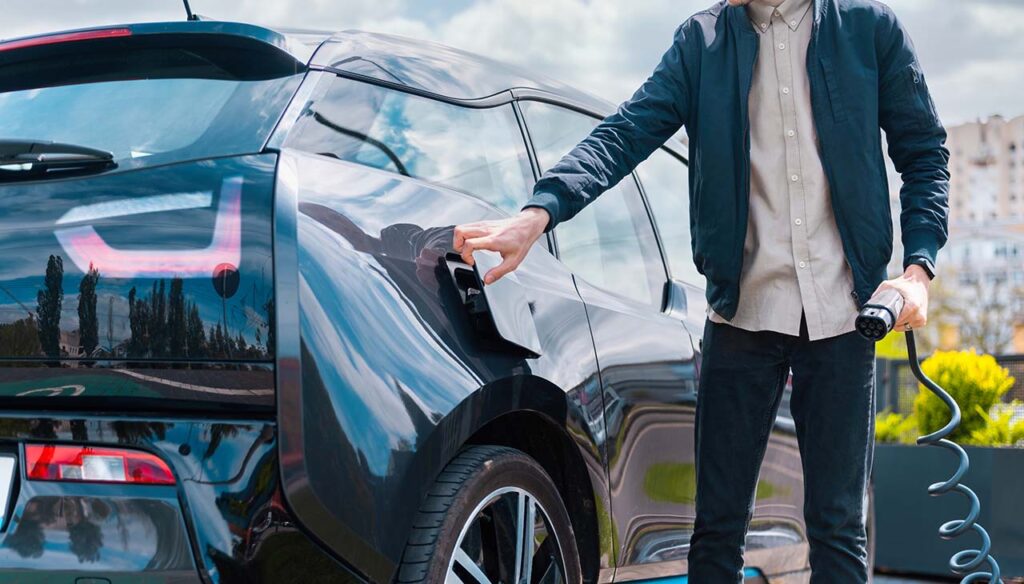Securing insurance for a salvage Tesla for sale requires careful consideration and specialized coverage. Salvage vehicles, including Teslas, come with unique risks and uncertainties due to their prior damage history. Insurers may offer policies tailored to salvage vehicles, considering factors such as the extent of damage, repairs undertaken, and potential safety concerns. It’s essential for buyers to thoroughly research insurance options and disclose all relevant information to ensure adequate coverage. While salvaged Teslas may offer cost savings upfront, potential insurance premiums and limitations should be factored into the overall decision-making process. By obtaining the right insurance coverage, buyers can enjoy peace of mind knowing their salvage Tesla is protected against unforeseen circumstances.
As the world shifts its gears towards a more sustainable future, electric vehicles (EVs) have emerged as a viable and environmentally friendly alternative to traditional combustion engine cars. However, as with any significant technological advancement, new challenges arise in parallel with its adoption. One such challenge pertains to insurance policies for these electric marvels. This document aims to illuminate the landscape of insurance for electric vehicles, delineating both the current scenarios and what we might anticipate in the future.
Understanding EV Insurance Policies
One unique aspect of insuring EVs involves coverage for battery damage or malfunction. Given that the battery is a crucial and costly component of an electric vehicle, it is critical to ensure that your policy includes comprehensive battery coverage. Some insurers may cover battery damage under comprehensive insurance, while others might offer it as an add-on.
Another pivotal consideration is the charging infrastructure. Home charging stations, being a significant part of the EV ecosystem, require their own coverage. Insurance policies should account for any damage to charging infrastructure, whether it’s caused by a power surge, vandalism, or natural disaster.
Lastly, given the value and portable nature of charging cables and other EV accessories, these items are often a target for theft. Ensure that your policy provides coverage for the theft of such accessories, which, although they might seem trivial, can be costly to replace.
Factors Affecting Insurance Premiums for EVs
There are several factors that might affect insurance premiums for EVs.
Firstly, the cost of the vehicle often has a direct impact on the insurance premium. Since EVs are generally more expensive than their fossil-fuel counterparts, insurers might assign a higher premium due to the higher potential replacement or repair cost in the event of a claim.
Secondly, battery replacement costs are a significant factor. As mentioned earlier, the battery is a crucial component of an EV, and its replacement can be quite expensive. This cost is considered when determining the premium.
Thirdly, the safety and security features of the vehicle are also taken into account. EVs often come equipped with advanced safety features, which could result in lower premiums due to reduced accident risk. On the other hand, if the vehicle lacks certain security features, it may be at a higher risk for theft, which could increase the insurance premium.
Lastly, the driving range and mileage of the EV could impact the premium. If the vehicle has a high mileage, it might be considered more likely to need repairs, which could result in a higher premium. Conversely, a vehicle with a longer driving range may attract a lower insurance premium due to the lower likelihood of being stranded and requiring roadside assistance.
Comparing Insurance Providers for EVs
When shopping for insurance for your EV, it is essential to research and compare the offerings of various insurance providers. Some may offer specialized EV policies that include unique benefits like green vehicle discounts or battery coverage. The coverage options, deductibles, and premiums can vary widely between providers, so it’s crucial to scrutinize these aspects and choose the one that best fits your needs and budget.
Coverage options may include comprehensive, collision, liability, and other types of coverage. Make sure you understand what each option covers and evaluate whether it’s necessary for you. For instance, if you have a home charging station, consider whether coverage for charging equipment is included.
Deductibles, the amount you’ll have to pay before your insurance kicks in, can also differ between providers. A lower deductible might result in a higher premium and vice versa. It’s important to strike a balance that you’re comfortable with.
Premiums, the cost of your insurance policy, are influenced by a variety of factors, as discussed earlier in this document. Make sure to get quotes from multiple providers to ensure you’re getting a fair rate.
In addition, many insurance companies offer unique discounts and incentives for EV owners, acknowledging their contribution to a healthier and more sustainable future. These could include discounts for low mileage, equipping your EV with safety features, or for using a home charging station instead of public charging infrastructure.
Don’t forget to ask about these potential savings when you’re shopping for insurance. Remember, the goal is to secure comprehensive coverage that suits your needs, at the best price possible.
Additional Considerations for EV Insurance
While EV insurance encapsulates various aspects of traditional auto coverage, certain considerations unique to electric vehicles must be addressed. An emerging issue among EV owners is “range anxiety” – the fear of battery depletion during a journey. As this could lead to unforeseen situations such as towing or roadside assistance, it’s critical to look for policy provisions that offer coverage for such circumstances.
In addition, charging stations can sometimes malfunction, causing damage to the vehicle. Insurance policies should provide coverage for this type of damage. It’s essential to understand whether this protection is included in the comprehensive part of the policy or if it’s a separate add-on coverage.
Finally, servicing and maintaining an EV requires specialized knowledge and parts, which can be expensive. As such, policyholders should ensure their coverage includes provisions for specialized EV repairs. This could include coverage for necessary repairs performed by certified EV mechanics and the replacement of specialized EV parts, ensuring that the vehicle’s performance and longevity are not compromised. Clarifying these aspects with your insurance provider ensures your electric vehicle is protected at all times, offering peace of mind as you drive towards a greener future.
The Future of EV Insurance
Looking ahead, the evolution of EV technology necessitates a concurrent adaptation of insurance policies. As electric vehicle technology advances, the insurance industry must pivot from traditional methods and anticipate new coverage options and considerations. The maturation of EV infrastructure, including charging stations and energy storage systems, might necessitate dedicated coverage areas. Similarly, the introduction of autonomous driving technology in EVs, which is expected to significantly reduce the accident rate, could drive substantial changes in coverage and premium calculations.
Moreover, new ownership models such as battery leasing and shared mobility services may result in shifts in insurance responsibilities from individual owners to manufacturers or service providers. Insurers need to prepare for such shifts by developing flexible policy structures that can accommodate these new business models.
The insurance industry has an influential role in facilitating the transition to electric mobility. By offering competitive and comprehensive coverage for EVs, insurers can contribute to making EV ownership more attractive, thereby promoting their adoption. Moreover, insurers can offer incentives to EV owners such as discounts for low mileage, green driving, or the installation of smart charging technology, further encouraging the shift towards electric mobility.
Furthermore, insurers could partner with automakers, charging station providers, and energy companies to offer integrated services, creating a holistic and user-friendly ecosystem for EV owners. Such alliances could foster further innovation in the sector, providing a buffer against potential risks while also capitalizing on new opportunities brought about by the electric mobility revolution.
In conclusion, the future of EV insurance is poised for significant changes. Insurers that can anticipate these shifts and adapt their offerings accordingly will be well-positioned to thrive in this new landscape, playing a crucial role in accelerating the transition to sustainable transportation.







